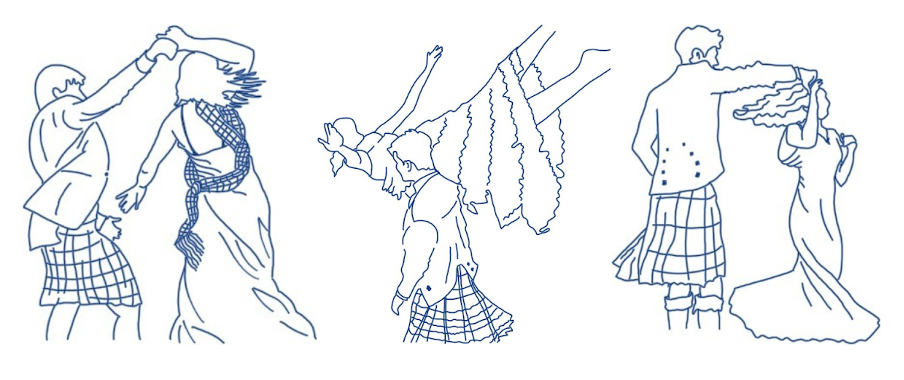Emily in St Andrews: An international’s introduction to Scottish traditions
- Luana van Oranje
- 3 hours ago
- 4 min read
St Andrews prides itself on being a loud-and-proud international university. With 135 nationalities travelling across the globe to our little corner on the North Sea, critics are not wrong about the general lack of knowledge many have about the wider country that they will come to call home.
Incoming freshers will hear enough throughout these coming weeks about the beaches and pubs in our little town, the golfing culture (and crazy tourists), and unique traditions such as the Pier Walk and Raisin Monday. However, this article — by an international, for an international — instead hopes to give you some starting insight into Scotland beyond St Andrews...
For those who drink, a successful Freshers’ Week is incomplete without a pint of Tennent’s (liquid gold, vitamin T), an iconic Scottish lager since its creation in 1885. Want something stronger? Many nearby breweries offer whiskey tours and tastings — a brilliant way to get out and see some more of the country. For a non-alcoholic alternative, give the carbonated soft drink Irn-Bru a taste.
To fuel yourself in preparation for the boozing, turn to traditional foods and snacks. Be adventurous with the fishy Cullen skink, or play it safe with shortbread, which was created in Scotland during the twelfth century. Sticking with the sweet tooth, make sure to grab a Tunnock’s Caramel Wafer or Teacake, and I’ve also been told the deep-fried Mars bar is an unskippable treat. One thing you must try is haggis: minced sheep’s ‘pluck’ that is often served with ‘neeps’ (turnip) and ‘tatties’ (potatoes).
No fear if you don’t get around to having haggis immediately — you won’t avoid it in January, with the celebrations of Burns Night on the 25th. Commemorating the national poet Robert ‘Rabbie’ Burns, who is most famous for his poem ‘Auld Lang Syne’, Burns Night centres around his ‘Address to a Haggis’, recited whilst the haggis is cut. The evening is, of course, incomplete without a taste…
The other holiday to note is the national St Andrew’s Day, celebrated on 30 November. The festivities start early, and I encourage you to don your red gown and head into the streets on the 29th for the ‘Big Hoolie’ — an evening of music and ceilidh dancing. On the 30th, make the most of the day by visiting the many institutions that uniquely open their doors to the public, free of charge. This includes our own exclusive Royal and Ancient Golf Club! As already mentioned, dancing is a significant part of Scottish tradition, and something I advise every fresher to try out. Ceilidhs are social events that you will inevitably come across throughout your time at St Andrews, and include dances such as ‘Strip the Willow’ and ‘The Gay Gordons’. They are easy to learn, and ceilidhs are often hosted for free at the Union. Keep an eye out for this in the Freshers’ Week programme!

For the more formal, lively alternative (which will inevitably get you giddy with the amount of spinning!), you should turn to reeling. This is led by the Caledonian Society, which works to preserve and promote Scottish culture. The popular society hosts weekly practices and two standout events throughout the year — the Martinmas and Candlemas Balls. Visit their stand at the Freshers’ Fayre for more information about Beach Reels, the free welcome event for beginners and returners alike.
As you embrace the festive side of Scottish culture, you will quickly come across the vibrant music central to it. To prevent being the lone mute at many Scottish events, consider brushing up on the lyrics of songs such as ‘Auld Lang Syne’ and ‘Loch Lomond’. For the unofficial national anthems, listen to ‘Flower of Scotland’ and ‘Scotland the Brave’.
Scotland is also known for the woodwind instrument which you will certainly hear before you see: the Great Highland bagpipe. They are composed of a bag, chanter, blowpipe, and multiple drones, and the sound is indescribable — go have a listen!
One thing any article on Scotland would be incomplete without is the infamous kilt. This wrap-around knee-length skirt is worn by men, with the tartan plaid pattern unique to the various Scottish clans. It is a part of Highland Dress, which also includes a kilt pin, sporran, and sgian-dubh. You might also see tartan plaid on trews or sashes, which will certainly steal the show at the aforementioned reeling balls! Check who’s a ‘true Scotsman’ (goes underwear-less under their kilt) at your own peril…
I hope this small slice of Scottish tradition makes you excited for the year to come, and that you take the initiative to learn more about this amazing place, its history, and its culture! One easy place to start? Apply for your YoungScot card, which gives you free bus travel and discounts to countless heritage sites. If there is one piece of advice I can give... speak to everyone beyond those in our university, travel this beautiful country, and love every minute of it!

The time has come, the time to choose (or be chosen by…?) your academic family. For some, this is the daunting challenge — for others,...






Comments